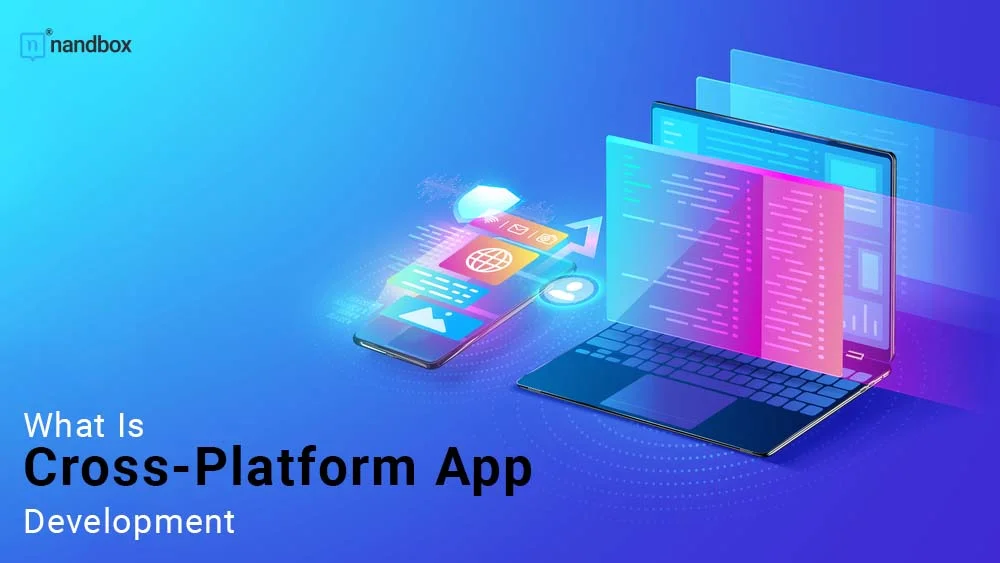The word “compatibility” reduces complexity in anything. To have something compatible with another means that there is no conflict and there is actual harmony between them. Cross-platform app development is quickly becoming a popular way to make apps in a certain way. These apps run on multiple operating systems and are compatible with each other. With this method, developers can make apps that work on both Android and iOS, so they don’t have to make two different versions. Learn how to get started developing cross-platform apps with us in this article.
Understanding Cross-Platform App Development
Cross-platform development is the process of making apps that can run on many different operating systems. This is accomplished through the use of shared technologies and frameworks. Such as the extremely popular React Native and Flutter, respectively. By using these frameworks, developers can make apps that work well and are compatible with both iOS and Android at the same time. This saves a lot of time and money and makes it possible to make more apps.
Choosing a Tool for Cross-Platform Development
With so many cross-platform development tools to choose from, it can be difficult to know where to start. Benefit from the experience of other developers and research online reviews. While all tools have their pros and cons, some popular options include React Native, Flutter, and Titanium. Before making a choice, look at how well each tool works with your current environment and the goals you want to reach.
Benefits of Cross-Platform App Development
The mobile development strategy that is best suited to your needs is going to be determined by a number of factors. These factors include the requirements, objectives, and tasks of your business. Cross-platform mobile development, like any other potential solution, has both advantages and disadvantages. Below we will list for you some of the main benefits of cross-platform app development, and why is it chosen instead of other development methods
Your Codes Are Reusable
With cross-platform app development, developers can simply reuse the codes they already wrote for different operating systems. This means that they don’t have to write new code for a new operating system. Using a single codebase enables programmers to reduce the amount of time spent on tasks that are performed in a repetitive manner, such as API calls, data storage, data serialization, and the implementation of analytics.
It Saves Your Time
Cross-platform apps require less code. This is because with cross-platform app development, codes are reusable. When it comes to coding, less is definitely more. You will save time by not having to write as much code. It also takes less time to test and maintain your code because there are fewer areas for errors to appear when there are fewer lines of code.
An Efficient Resource Management
Developing individual applications requires a significant financial investment. Having only one codebase to work off of makes it much easier to keep track of all of your available resources. If you give your iOS and Android development teams the right training, they can both learn how to make and use code that was written by the other team.
Enhanced Customization and Accelerated Time to Market
Since you won’t have to make different apps for different platforms, you can design and release your product much faster. Furthermore, it will be easier for programmers to make minor adjustments to particular sections of your codebase if your application needs to be modified or converted. Also, it will enable you to respond to user comments more quickly.
App Design Challenges and Best Practices
Cross-platform app development can present a range of design challenges. These include managing different types of hardware, such as identifying the best way to package files and images. That is for them to work optimally on each platform. It’s important to make sure that users have the same experience no matter what device or operating system they use. To accomplish this, developers should use standard UX/UI components, define a consistent data model for deep linking and content sharing, and test applications across all devices and operating systems.
Testing and Debugging Your App Examples
To give users the best experience and make sure everything works well, it’s important to test your app thoroughly on all target platforms. This includes running automated tests as well as manual quality assurance testing. Debugging can also be a key factor in success when working with cross-platform development. Developers should identify problem areas and improve on them before releasing applications for download. Also, support after the release should include bug fixes and updates that work best for each platform. See if the solution you choose easily integrates with cloud support services.
Exploring Platform APIs for Unique Features
Even though most of an application’s development will be pretty similar across different operating systems, features that are only available on one platform may need some extra care. Exploring the latest APIs available for each platform and what they can do will help developers take their applications to the next level. Additionally, ensuring that these special features are optimized for each platform is essential, as certain tweaks and changes may be needed due to differences in how devices handle specific tasks.
When should you consider cross-platform app development?
There are a few points that should be checked if you want to develop a mobile app through cross-platform development.
- If you’re limited by a certain budget or if you’re short on some resources, cross-platform app development is definitely for you. As it allows you to have your phone released for multiple operating systems in a time-saving and a money-saving kind of way.
- If you are targeting both iOS users and Android users, then you should choose the cross-platform approach.
- If the app isn’t complicated and doesn’t require many platform-specific functions.
Wrapping It up for You
Cross-platform programs will have a simple way of installation, very reliable functioning, and low production costs. However, don’t expect high performance or customization from a cross-platform app development framework. Nowadays, cross-platform applications are very common. The Xamarin, Flutter, and React Native frameworks deserve all the credit.
When it comes to high performance for applications, developers agree on building or creating a “native” application. With nandbox, you can develop a native, flawless application within minutes. It will provide you with excellent performance and great sustainability. nandbox is the only native app builder in the market that provides you with a fully native app development experience. Sign up now for our app builder, and don’t miss out on the whole experience.








